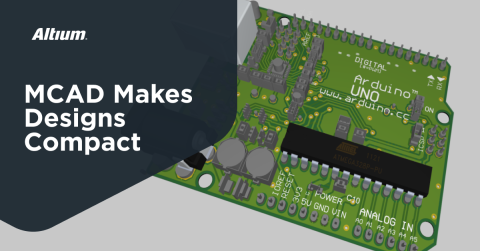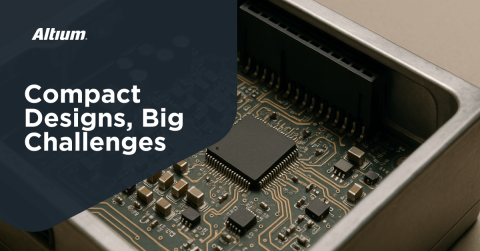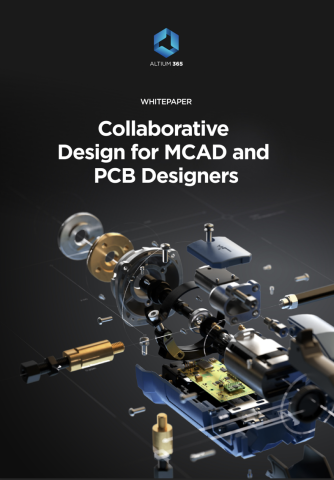The Top 5 Workflow Bottlenecks Slowing Down Mechanical Engineering Teams

Mechanical engineering has grown increasingly complex, with cross-functional collaboration now a core priority in electronics design. The need to consult various stakeholders, from neighboring PCB designers to procurement teams and manufacturers, brings with it more insight into workflow bottlenecks.
But recognizing these challenges does not mean engineers should accept the time and cost constraints of outdated processes. Instead, they should view them as opportunities to better collaborate with external teams, simplify electronics development, and encourage even greater efficiencies through ongoing iteration.
This article will uncover the flaws that halt projects, and provide actionable steps to leverage the new insights for faster design and informed workflows.
1. Dependency Bottlenecks and Design Handoff Delays
Among PCB and mechanical designers, dependencies equate to risks. High dependency among roles and processes, for example MCAD waiting on simulation checks delaying releases, can cause supply-chain-wide bottlenecks. When one task stalls, subsequent tasks follow.
Why Mechanical Teams Struggle
Long lead times in simulation or in physical prototyping can often delay final mechanical layouts. Specialist reviews can also become a choke point, especially in new releases. In order to fix this, teams can work on a few tasks to reduce dependencies between them.
- Visualize dependencies using a digital software with cycle-time heatmaps or value stream maps.
- Run retrospective or process reviews to spot consistent delay points.
- Introduce work-in-progress (WIP) limits, parallelize tasks, and cross-train engineers to reduce single-point dependencies.
Other things that can be a hindrance are poor data sharing as well as inadequate translation of changes between electrical and mechanical teams. This can be remedied with an ECAD-MCAD solution.
2. Approval and Review Bottlenecks
The longer documents and designs await approval, the further behind the curve each team becomes. Such approvals could be drawings, bills of materials (BOMs), and vendor quotes. As these sit idle in review, time is lost to the process, but this can be avoided.
To ‘unfreeze’ delays and encourage a leaner approach to design reviews, there are some changes that can be made to the process.
Firstly, the introduction of tiered approval systems, auto-escalation for delays, or alternate review strategies. Secondly, implementing clear standard operations procedures (SOPs) can reduce review cycles.

3. Manual Transfers Between Tools and Systems
Outdated workflows whereby teams manually share updates, which become outdated instantaneously.
Manual data transfers add an inconvenient and, quite frankly, unnecessary process to the electrical-mechanical workflow. This could be re-entering BOMs, parts data, material specifications, or routing between CAD, PLM, ERM, or spreadsheets.
In the context of mechanics, this could be translating part metadata, simulation results, vendor quotes and comparison, all requiring manual work to complete. In order to overcome this bottleneck, designers must eliminate it by adopting the following:
- Automated data handoffs via system integrations or APIs.
- Centralized systems where documentation, CAD files, and BOMs live in one shared repository with workflow management.
4. Communication Silos and Misalignment
Cross-team communication is one of the core bottlenecks in all PCB arenas - mechanical teams, PCB designers, procurement, and manufacturing. Most likely, the lack of dedicated tools maintains a poor level of data sharing, which leads to misalignment and delayed fixes.
Mechanical engineers pick up design tasks, for example, without consulting vendor lead times. Likewise, outdated BOMs can cause later issues in regards to component obsolescence and requirements.
Manage Siloed Communication
Begin by implementing workflow maps and shared dashboards visible to all disciplines. Better yet, ECAD-MCAD integration tools help deliver insight into product changes, combining data from PLM, BOMs, and PCBs.
5. Outdated Tools and Lack of Automation
Legacy CAD, PLM, or fragmented file storage systems slow design iterations. Relying on spreadsheets or tribal knowledge adds to potential errors and delays. For mechanical engineers, this can cause confusion in terms of revisions, alignment errors, and influence reworks that could be avoided.
Simple Fixes for Outdated Solutions
- Upgrade to a modern CAD or PLM system with automated features, such as version control, changelogs, direct vendor integration, and embedded simulation data.
- Implement lean time-saving tools, including artificial intelligence to manage design check, optimize layouts, and automate rule validation.
- Adopt new process frameworks suited to modern challenges. The Theory of Constraints (TOC) is a lean management framework that helps identify, exploit, and elevate key development bottlenecks.

Tips for Rolling Out Design Workflow Improvements
To tackle these workflow bottlenecks effectively, teams should adopt a structured, iterative improvement plan that ties mechanical and electronic domains together. These steps will support this, but also marry with the adoption of an ECAD-MCAD-integrated solution for design and stakeholder management.
1. Conduct a Workflow Audit
Begin mapping out current processes. From the initial concept and ECAD or MCAD simulation to BOM creation, change control and prototyping, a new system should be implemented for the entire product lifecycle.
- Visualize queue piles and wait states, such as tasks waiting for ECAD-MCAD synchronization, vendor parts, or change approvals.
- Incorporate ECAD-MCAD audit checkpoints to verify if mechanical changes trigger electrical updates and vice versa.
This proactive audit identifies dependency delays, miscommunication hotspots, and synchronization flaws in cross-displicine workflows.
2. Measure Critical Metrics
Track measurable indicators to establish a baseline and monitor improvements:
- Cycle times for ECAD to MCAD synchronization, reviews, and prototyping.
- Queue and wait times, including delays in co-design handoff or supplier procurement.
- Review lateness, such as engineering change order (ECO) approvals or budget sign-offs.
3. Prioritize the Largest Bottleneck
Identify the most critical blocker. This could be a structural change that triggers PCB rework, or vice versa. It could also be a procurement delay as a result of outdated BOMs due to electronic component lifecycle misalignment.
4. Implement a Single, Targeted Fix
To address this major bottleneck, valuable tools are available to ensure improved communication and positive remuneration. Products with ECAD-MCAD integration prove invaluable to teams that suffer the consequences of the aforementioned bottlenecks. Real-time bidirectional updates reduce the need for iterations and prevent the same defects and reworks made countless times.
The use of a combined CAD environment will also simplify approval processes, cutting unnecessary wait time as a result of interdepartmental dependencies. Making all information available in real time for all stakeholders eliminates doubt and enhances visibility across the board.
5. Iterate and Scale Improvements
Following the first intervention, these steps can be taken to ensure added returns:
- Re-measuring metrics to confirm improvements.
- Leverage new insights to make more informed decisions moving forward.
- Carry out regular audit cycles to continuously elevate processes.
Long-Term Collaboration Between Mechanical and Electrical Designers
Mechanical engineering demands a parallel evolution in how teams collaborate. By identifying and addressing common workflow issues (whether rooted in communication, enterprise technologies, or processes), organizations can accelerate development cycles and reduce costly rework.
Integrated ECAD-MCAD systems serve as the foundations of this transformation, bridging the divide between disciplines and empowering other stakeholders with real-time design insights. Ultimately, continuous iteration, shared accountability, and a unified digital environment are key to building resilience, pre-emptive design workflows that can be scaled with change.
Those that fail to innovate behind the scenes will continue to see the same issues arise, and the potential for things like cost reduction and efficiency could impact client relationships.












